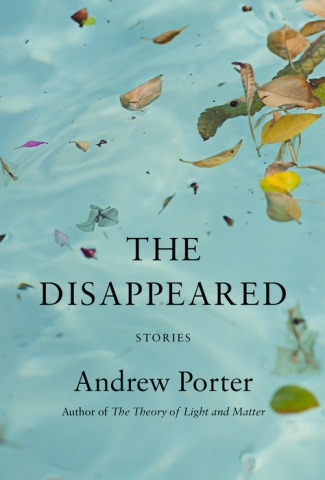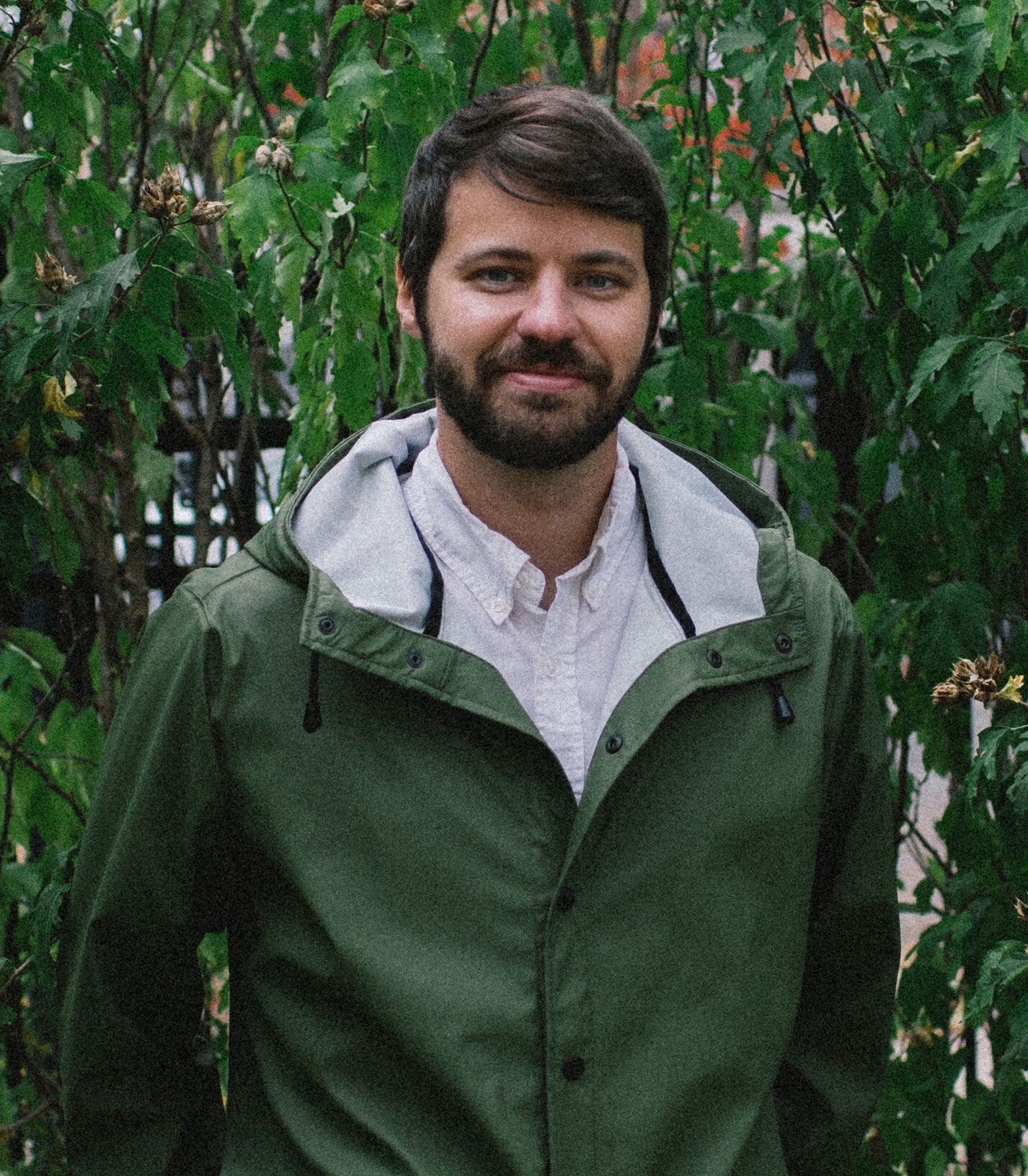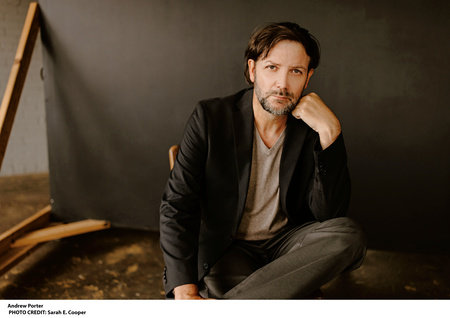In the opening paragraph of the story “Vines,” Andrew Porter writes, “One of these things in the closet was a small painting by an ex-girlfriend of mine who had since died of cancer.” The chronological end is spelled out for the reader before the story begins. This line puts the story in the character’s perception, full of nostalgia and longing and regret. This prognostication recurs in the stories across The Disappeared, where each story is an exploration of memory and a reflection on what could have been. I spoke with Andrew Porter about constructing his stories across location and time.
—Joshua Bohnsack

Joshua Bohnsack: Many of these stories are either set in Texas or are Texas-adjacent. Even if the characters aren't from there, they still have a relationship with either Austin or San Antonio. How does the location play into The Disappeared? Do you tend to construct stories in a specific location?
Andrew Porter: Well, with my first collection, the stories were set all over the country, and I wasn't really thinking about them being geographically linked. With this book, before I even was thinking that it was a book or a collection, I was just writing a bunch of stories, and I began to notice that they're all set either in Austin, which is pretty close to San Antonio or else in San Antonio and so I was aware of that. After I had written a certain number, I thought, “Well, this could be an interesting linking element for this body of work,” and so, rather than trying to vary it, I leaned into it and thought of it as a constraint for the work. Each story I wrote would either have to be set in San Antonio or Austin, or have some connection. There's one that takes place in New York state, the story “Rhinebeck.” But even in that story, the couple is moving to Austin. I wanted that linking element to exist.
JB: As soon as I saw Austin come up in “Rhinebeck,” I realized it's inevitable. They have to move away because of how this collection is moving.
I do wonder in that way, if there is a Dubliners element, with the first-person point of view, was it intended that any of the characters are meant to overlap or interact with each other throughout the stories?
AP: I wanted all the stories to be first-person, and that's partly because I wanted there to be this particular type of tone to the book. I wanted it to be reflective at times, kind of wistful, and I wanted the stories to all be linked in that way by that common tonal element.
In terms of the characters being the same character or characters from one story appearing in another, I didn't intend for that, however, I was thinking of all the stories as belonging to the same narrative world. In my mind, I could imagine these characters living down the street from each other, or a mile away. I was imagining them all occupying the same fictional San Antonio/Austin area.
JB: Another element that occurred were love triangles within the stories, and often utilized in very different ways. With those kinds of situations, did you begin with the plot or with the characters?
AP: I tend to like writing stories that are somewhat self-contained with a fairly small cast of characters. When you write a story about two characters, you're somewhat limited, I think. But when you add that third character in, you can do a lot of interesting things. You can create a lot of different situations and create a lot more complexity. The idea of three characters is really appealing to me.
I also was thinking if ways in some of these stories being kind of mirrors of each other. I've always loved when there are stories within a collection that are mirrors of another story, with a similar dynamic, but with a slight variation. For example, the story “Vines” in some ways is a mirror of the story “Rhinebeck” or a mirror of “Jimena,” where you have a third character, who's not in the relationship, coming into this situation and complicating it. In “Vines,” for example, it's an older character who comes into this relationship. In “Jimena,” it’s a younger character, but it's a similar type of dynamic.
JB: I thought it fit with the title, The Disappeared. It made it apt. You know instantly, one of these three people are going to disappear. It's inevitable.
That's a tactic that I found that really resonated within the work, where you would know the fate of the characters at the very beginning. We were told things like, “This was before she died” or we’re told “My now ex-wife.” I admire that way of putting the end before you put in the story.
You noted Stuart Dybek’s Coast of Chicago as an inspiration for this book. That technique is reminiscent of “Pet Milk,” where the narration moves through time in a nonlinear way. What role do you see time playing within the narration of your stories?
AP: This is something that's been of interest to me since I started writing. Stuart Dybek’s, particularly in that book, is a of master of manipulating time.
I'm always thinking about that book. It remains a very important book to me. You mentioned the story “Pet Milk,” and that's a great example of something that I’m interested in in fiction, with characters in their relationship to different versions of themselves at different times in their life.
If you recall, the ending of that story is a moment where the narrator sees a young kid who reminds him of himself as a teenager, and he imagines himself as a teenager watching himself and his current girlfriend as they're on the train. That’s the type of thing I was interested in in this book, as well as the characters in their relationship and way they see younger versions of themselves and the other characters around them.
JB: That goes back to the mirroring effect where you were saying between these stories how these characters are seeing themselves in these situations throughout.
Something else that plays heavily in Dybek's Coast of Chicago that also plays within yours is the use of shorter and longer form fiction together. How did you see the varying lengths coming together as a collection? How did it play into ordering the collection?
AP: I think that at the same time that I was writing the longer stories in the collection, I was, for the first time my life, really experimenting with flash fiction. I don't know that I was even thinking of them as flash fiction so much as just experiments in vignette.
I knew at a certain point that the book was going to be about the setting in which it takes place, and I wanted the shorter pieces to be little accents that give little glimpses into this world. The world of San Antonio, the world of Austin, and that that also kind of touch on some of the larger themes in the book as well, but just done with a smaller canvas. I was thinking at all times of these shorter pieces I was writing as companions to the longer pieces. I just didn't know how they were all going to blend together. I just knew that I wanted them all to be in the same book. I ended up writing a lot of those shorter pieces, and I also ended up writing a lot of longer pieces. I picked the shorter pieces that seem to resonate the most off the longer pieces; and that kind of captured the same tone and feel.
JB: Almost all of the characters are either artists themselves, or adjacent to artists, where their partners were painters or cellists or ceramicists. What does it mean to you like to write through other mediums, or write people who are creating work?
AP: As I was assembling the stories, I had far more stories than I needed for the book. And so one of the things I was noticing was the art and artist theme, and I leaned into picking the stories that we're touching on that. Even after the fact, I started thinking at a certain point of writers that I'm most drawn to, including Sheila Heti and Rachel Cusk and Sigrid Nunez, and all these writers whose work is most important to me: They all write about art and process.
That's a preoccupation of mine, exploring characters who choose to do that with their life. But I also think, with the larger theme of characters reflecting. Artists, have such distinct periods. Artists are particularly interesting to think about in terms of different versions of themselves at different times.
JB: What are you working on next, or what kind of projects are you interested in currently?
AP: I've been working on a novel that I have a draft of, and that's pretty close to being finished. It's set in Southern California, in the ‘80s. So, a very different world than the Texas world of this book. It's a novel I've really been enjoying writing, and I’m at a point where I've stepped away from that now, but it feels close.
I’m also eyeing the next collection. In my writing life I tend to alternate between novels and collections. You get kind of tired of working within a particular form for a while, and you want something new, a new challenge. So by the time I've been through a draft of a novel, I’m eager to get back to stories, and by the time I finished the collection of stories, I'm ready to stretch my legs a bit.



